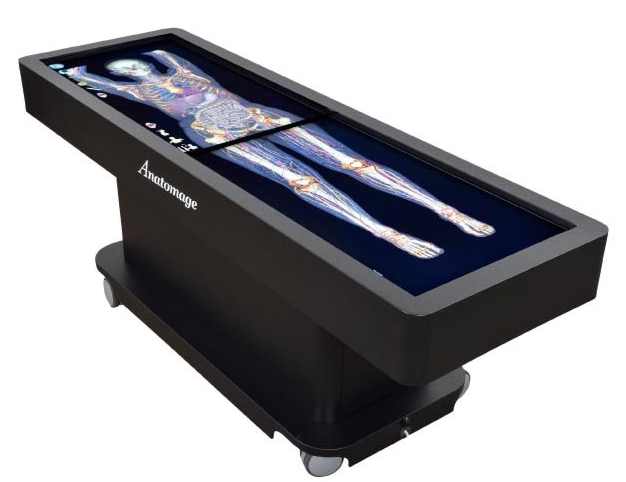| Virtual Reality Dissection |
| Written by Harry Fairhead | |||
| Saturday, 13 July 2013 | |||
|
Virtual Reality Dissection is not only an alternative to the difficult task of real human dissection, it may also be better because it can show students details that would otherwise be difficult to see clearly. The Anatomage Table (formerly known as the Virtual Dissection Table), developed by Anatomage in collaboration with Stanford University's Division of Clinical Anatomy, is claimed to be a breakthrough in visualizing human anatomy. It uses VR to allow the student to interact with the virtual cadaver not only as if it was the real thing - but better than real. By being able to rotate the body and peal away layers, a clear idea of how the parts fit together can be acquired in a much shorter time. It isn't a replacement for cadaver dissection but it can make better use of the students time by combining the two approaches together VR and real life.
The screen is 3960 x 1080 LCD and it is driven by software that can render using volume rendering, 3D mesh or photographic overlay. The idea is that the different types of render are blended together to provide the best view.
More InformationRelated ArticlesAnatOnMe - a virtual tool for physiotherapy VR Lets Rat & Man Play Together LightSpace agumented reality the future UI
To be informed about new articles on I Programmer, install the I Programmer Toolbar, subscribe to the RSS feed, follow us on, Twitter, Facebook, Google+ or Linkedin, or sign up for our weekly newsletter.
Comments
or email your comment to: comments@i-programmer.info
|
|||
| Last Updated ( Thursday, 11 June 2020 ) |


